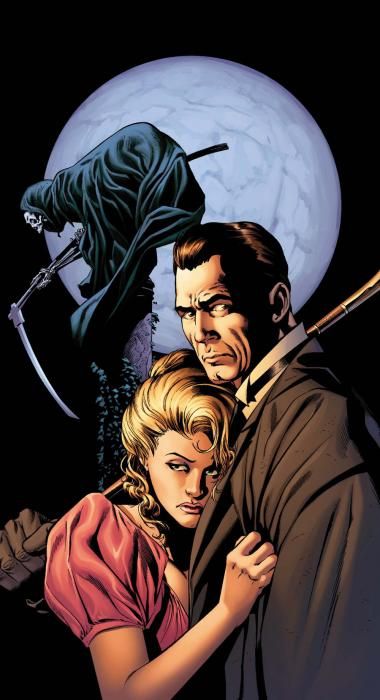Mark Waid and Mirco Pierfederici turn in a solid second issue to this strong series, that deserves a look from anyone new to these characters.
Trapped with hundreds of rats, our heroes, Simon Archard and Emma Bishop, escape to the not necessarily superior sewer. After being washed out to sea and returning to their headquarters, Archard informs Bishop that someone is trying to kill her. When another agent of Archard's turns up dead, Archard calls all the troops home and ups the investigation into who is hunting his people. This leads Bishop and Archard to an underground bare knuckles boxing ring, with some unlikely competitors.
Waid plays on his strengths and the strengths of his two main characters to great effect. It's their charm and witty banter that had me enjoying this issue so thoroughly. I confess to flashbacks of "Moonlighting" in its heady days of sexual tension and hi-jinks (of course I've just dated myself terribly with that reference, which was dated twenty years ago) and I enjoy that same enthusiasm and wit here in "Ruse."
In an era of "good" female characters being either ridiculously hard to come by, or all feeling cast from the exact same mold, Waid has done a particularly great thing with Emma Bishop. She comes off as wholly original, and thus fascinating. Although, truth be told, she'd be nothing without Archard as her foil, in the same way that he'd be nothing without her. There's something delicious in that. It's the chemistry between the two that will keep me coming back to "Ruse" again and again. Though that's not to say Waid isn't doing some good plotting here, as well. The book moves quickly and smoothly while being smart and fun. What more can you want from a comic?
Pierfederici continues to do nice work here, except for on the cover, which I find silly beyond belief...what I think that Grim Reaper is doing in the background is certainly not fit to print. Inside, however, his artwork is strong, fluid, and easy to follow. Pierfederici is not afraid to be expressive, and he handles the period aspects of the book with seeming ease. Some of the expressions do feel a bit sloppy and rushed compared to the previous issue. However, the fact that the art is not afraid to be expressive -- which in this age of faces so frequently looking the same no matter what's actually occurring on the page -- is something I find admirable, even when the result is not perfect.
Though ideally, the art would get a little refining, I find myself totally engaged in Waid's "Ruse," and would likely follow Emma Bishop and Simon Archard just about anywhere.

